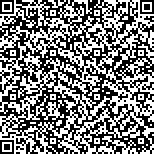下载中心
优秀审稿专家
优秀论文
相关链接
摘要

金属溶解物的吸收光谱测量是水体重金属遥感反演的关键。本文使用水体透射光测量装置,利用ASD光谱仪测量相同厚度不同浓度铜离子溶液的透射光辐亮度,运用比值法计算水体铜离子消光系数和吸收系数,最终得到400-900 nm波长范围内的水体铜离子单位浓度吸收系数光谱。该方法可以较好地消除实验装置和水中悬浮物的影响。结果表明,水体铜离子在蓝、绿光波段吸收作用极小,红光至红外波段的吸收系数快速增大,与铜离子溶液颜色相吻合;吸收峰位于810 nm。多次独立实验测量所得结果的标准差很小,说明测量结果稳定。与Jancsò测量结果的对比分析表明,本文结果与国际上著名测量结果接近,且部分波段的测量值更为合理。
The key to extracting heavy metal from water through remote sensing is to accurately obtain the absorption coefficient spectrum of the dissolved heavy metal. The first step is to calculate the absorption coefficient per unit concentration of each dissolved heavy metal. The absorption coefficient is an important parameter in our remote sensing inversion model of heavy metals in water. We measure copper ions, which are common heavy metals in water that display evident characteristics in the absorption spectrum. Therefore, extracting copper ions by using remote sensing is a breakthrough. We designed equipment, which can adjust the path length of passing light and provide accurate results at the visible and near-infrared wavelength range. Then, we use an Analytical Spectral Devices (ASD) spectrometer to measure the radiance of direct light passing through copper ion solutions with different concentrations on the standard board. Using the ratio method to eliminate environmental errors and the effect of suspended solids in water, we calculate the extinction coefficient and the absorption coefficient per g/L of copper ion solutions. Finally, we obtain the absorption spectrum per g/L of copper ions from 400 nm to 900 nm. The absorption coefficient in the blue and green solutions is very low but rapidly increases from the red to near-infrared region, which coincides with the color of copper ions. Maximum absorption is observed at 810 nm, and the absorption coefficient is larger in red than in blue and green. This observation is caused by the d-d transition in the outermost electrons of copper ions, which mostly absorb the energy of red color. We perform numerous independent experiments and find that the standard deviations of the results are minimal, indicating the stability of our measurement results. Our results are consistent and more reasonable and accurate than those of Jancsò's in some wavelength ranges. This conclusion is based on observations of the different light colors on the standard board between pure water and high concentration copper ion solutions. We use the absorption coefficient at 722 nm to calculate the concentration of some copper ion solutions and compare them with the real concentrations. The relative errors are less than 5%, which verifies the accuracy of our results at 722 nm. We conclude that the obtained absorption spectrum is reasonable and accurate. The results can be used as the base parameter in the remote sensing inversion model of copper ions in water. Our results suggest that the maximum absorption is at 810 nm, indicating that this wavelength is the most sensitive to copper ion concentration changes in water.

